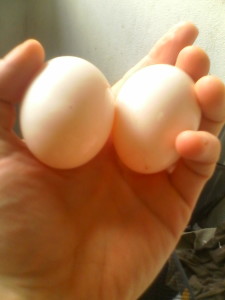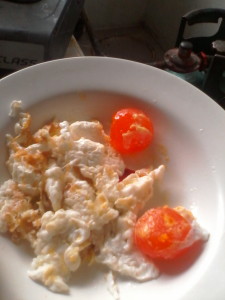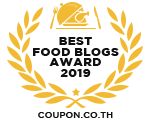Thai Preserved Eggs
A lot of breakfasts, not only in my kitchen but as a general rule are ad-libbed mixtures of various leftover items that are hanging around the kitchen. Fried rice is leftover rice plus whatever vegetables and protein you have, protein like eggs. Eggs are great because they keep longer than most things in their shells, especially if they’ve been preserved.
 Thai preserved eggs are in the culinary traditions of many cultures. The jar of pickled eggs on the bar has been a comic mainstay for decades, for one quick example. But these eggs are so distinctively Asian, as the picture indicates.
Thai preserved eggs are in the culinary traditions of many cultures. The jar of pickled eggs on the bar has been a comic mainstay for decades, for one quick example. But these eggs are so distinctively Asian, as the picture indicates.
They came to me covered in this charcoal-like dust, as I began to rinse that away I found an underlying layer of something very much like mud. Beneath that was a smooth, white, and vaguely translucent egg-shell, that had a strange feeling of density.
I cook mostly with this King brand rice bran oil, it’s cheap and the rice bran is loaded with antioxidants and vitamin E. Endosperm are where it’s at when it comes to some of that stuff. So, I heated some oil and cracked two of these strange eggs into the pan.
 The first thing I noticed was the solidity and color of the yokes. They were almost hard, and the color was a nearly fluorescent orange. I assumed they wouldn’t take long to cook and once the whites had cooked through, I transferred my feast to a plate.
The first thing I noticed was the solidity and color of the yokes. They were almost hard, and the color was a nearly fluorescent orange. I assumed they wouldn’t take long to cook and once the whites had cooked through, I transferred my feast to a plate.
I took a bite of the white of one egg first. It was, in a word, salty. In two, very salty. But it had a really unique eggyness too. Then on too a yoke, and this was interesting. Salty yes, but texturally unique. Spongy and firm, slightly crumbly but not at all dry. This made for a fantastic contrast with the egg flavor, which I usually know as having your standard fried egg texture, maybe a little runny.
The other one had to be mixed with rice porridge, which is one of the places these eggs are most often put. They add nutrients, flavor, and all sorts of exciting texture. And it’s fun to play with the dirty eggs too, but no rush to eat them all. They’ll last.

